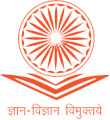印度马哈拉施特拉邦那格浦尔Mahalgaon地区蔬菜重金属毒性的生物积累
其子as Mahakalkar1*水银血压计,古普塔2和S.S. Nandeshwar1
1seadal Mahila Mahavidyalaya, Sakkaradara广场,那格浦尔- 09,印度。
2莫霍塔科学学院,Sakkaradara广场,印度那格浦尔- 09。
DOI:http://dx.doi.org/10.12944/CWE.8.3.16
摘要
Mahalgaon是印度马哈拉施特拉邦那格浦尔区Kamptee Taluka的一个村庄。来自该村的大多数农民从事蔬菜种植,该村是那格浦尔市场所需蔬菜的主要供应商之一。这一地区的所有田地和农场都是用纳格河的水灌溉的,这条河受到城市废物和重金属的严重污染。本研究的目的是研究重金属Cu、Mn、Fe、Zn、Ni和Pb在纳格河灌溉的水、土壤和蔬菜中的生物积累,并评价不同蔬菜对重金属的生物积累水平。为了这项研究,我们选择了马哈隆地区的五个农场。每个农场都坐落在纳格河畔。按照APHA中给出的抓取法进行采样,对水、土壤和蔬菜进行采样。采用原子吸收分光光度计(AAS)分析了重金属(Cu、Mn、Fe、Zn、Ni、Pb)的浓度。结果表明,在水中,铁和锌的浓度最高;镍和铅的含量最低。 The concentration of Fe and Zn in the soil samples was very high compared to the WHO/FAO maximum permissive limits while the concentrations of Cu and Mn were slightly above the permissible limits. The concentration of Pb and Ni were below the detection limits in soil. On the other hand in all the vegetables, the concentration of heavy metals was higher than the WHO/FAO permissible limits. the soil-plant transfer factor of different heavy metals shows the following order- TF锌>特遣部队菲>特遣部队铜>特遣部队倪>特遣部队锰>特遣部队Pb
关键字
生物体内积累;重金属;Temasna;唠叨河;蔬菜
复制以下引用这篇文章:
马哈拉施特拉邦那格浦尔马哈尔冈地区蔬菜重金属毒性的生物积累研究。Curr World environment 2013;8(3) DOI:http://dx.doi.org/10.12944/CWE.8.3.16
复制以下内容以引用此URL:
马哈拉施特拉邦那格浦尔马哈尔冈地区蔬菜重金属毒性的生物积累研究。世界环境杂志2013;8(3)。可以从://www.a-i-l-s-a.com/?p=5281
[HTML全文]

这个作品是根据知识共享署名4.0国际许可.








